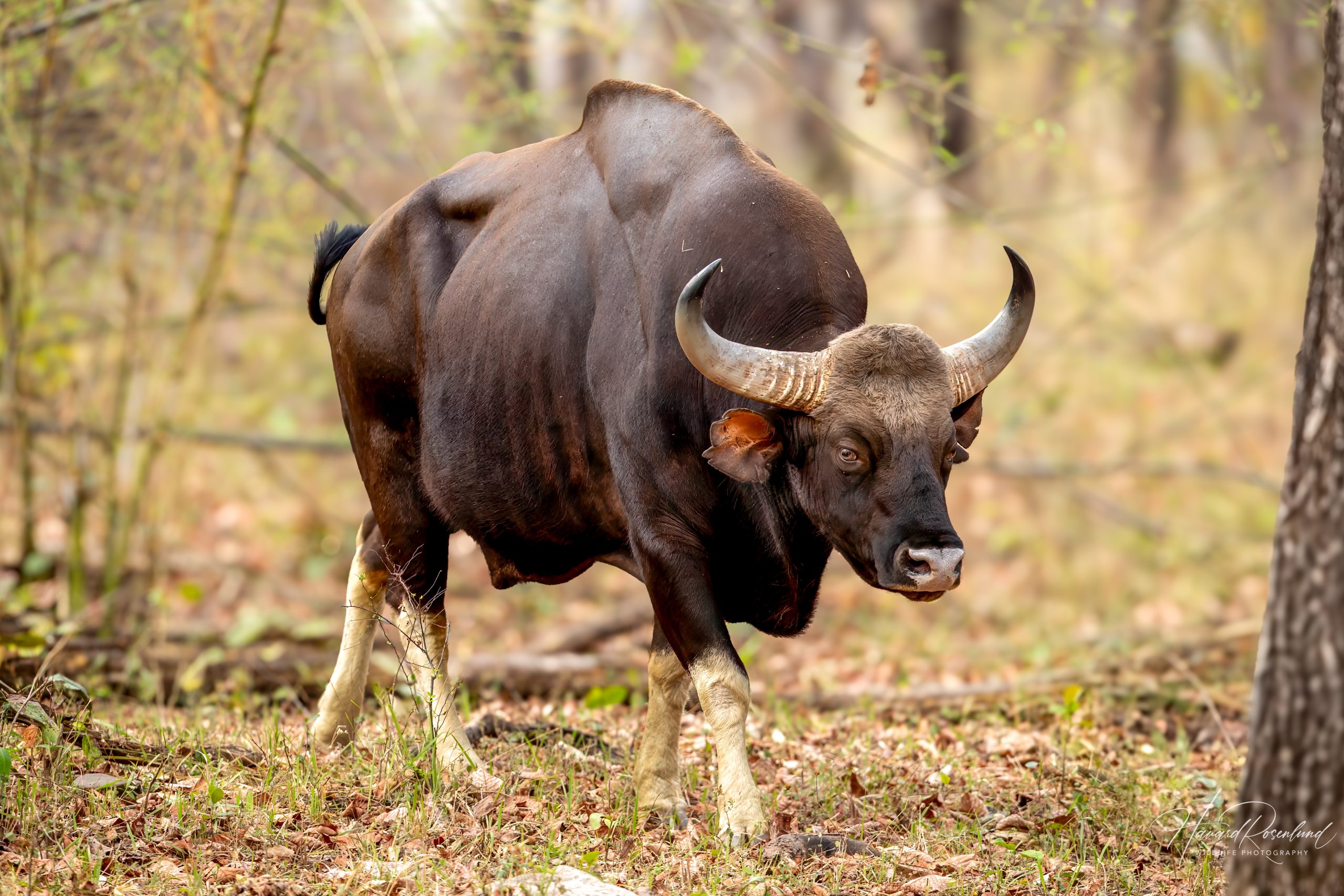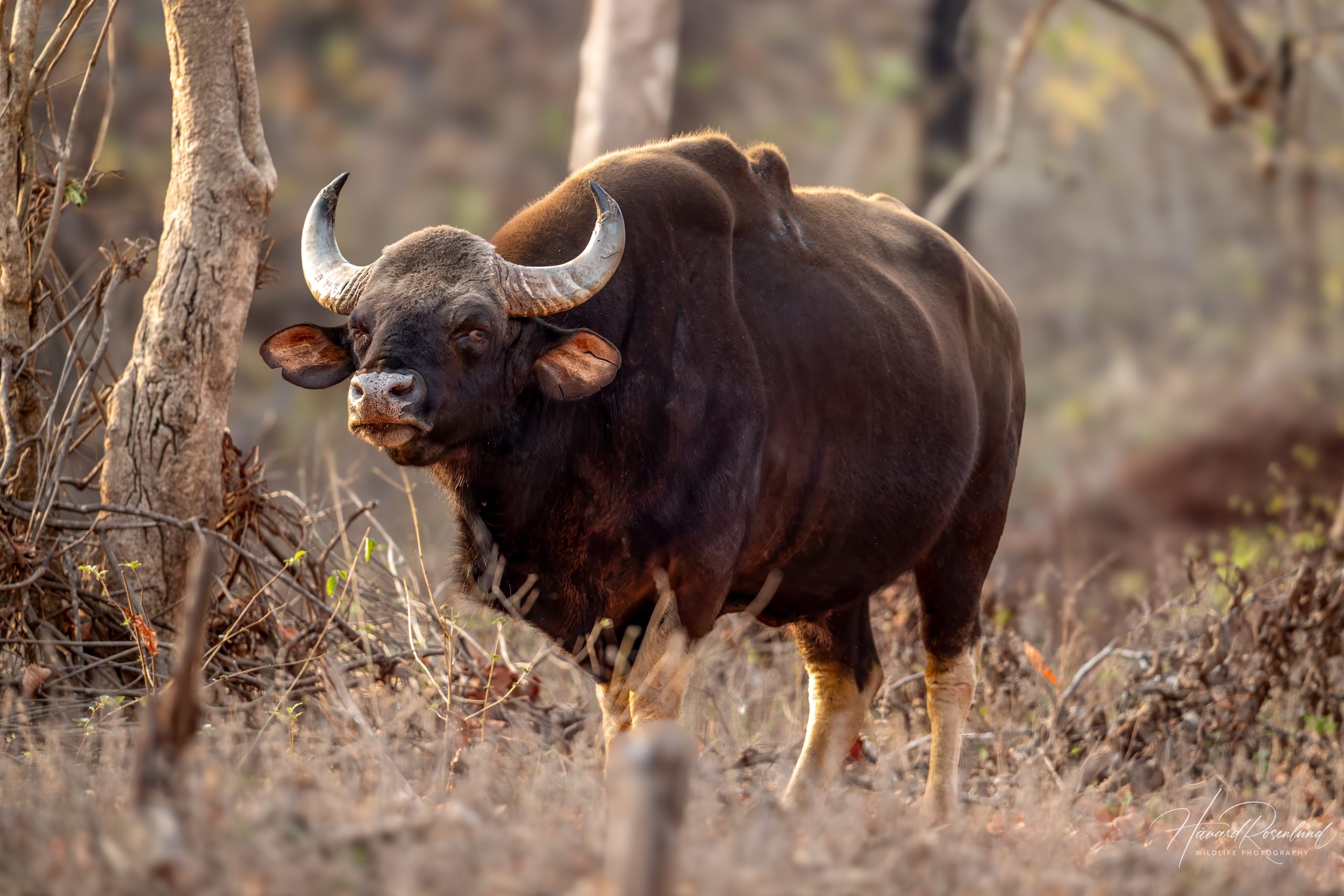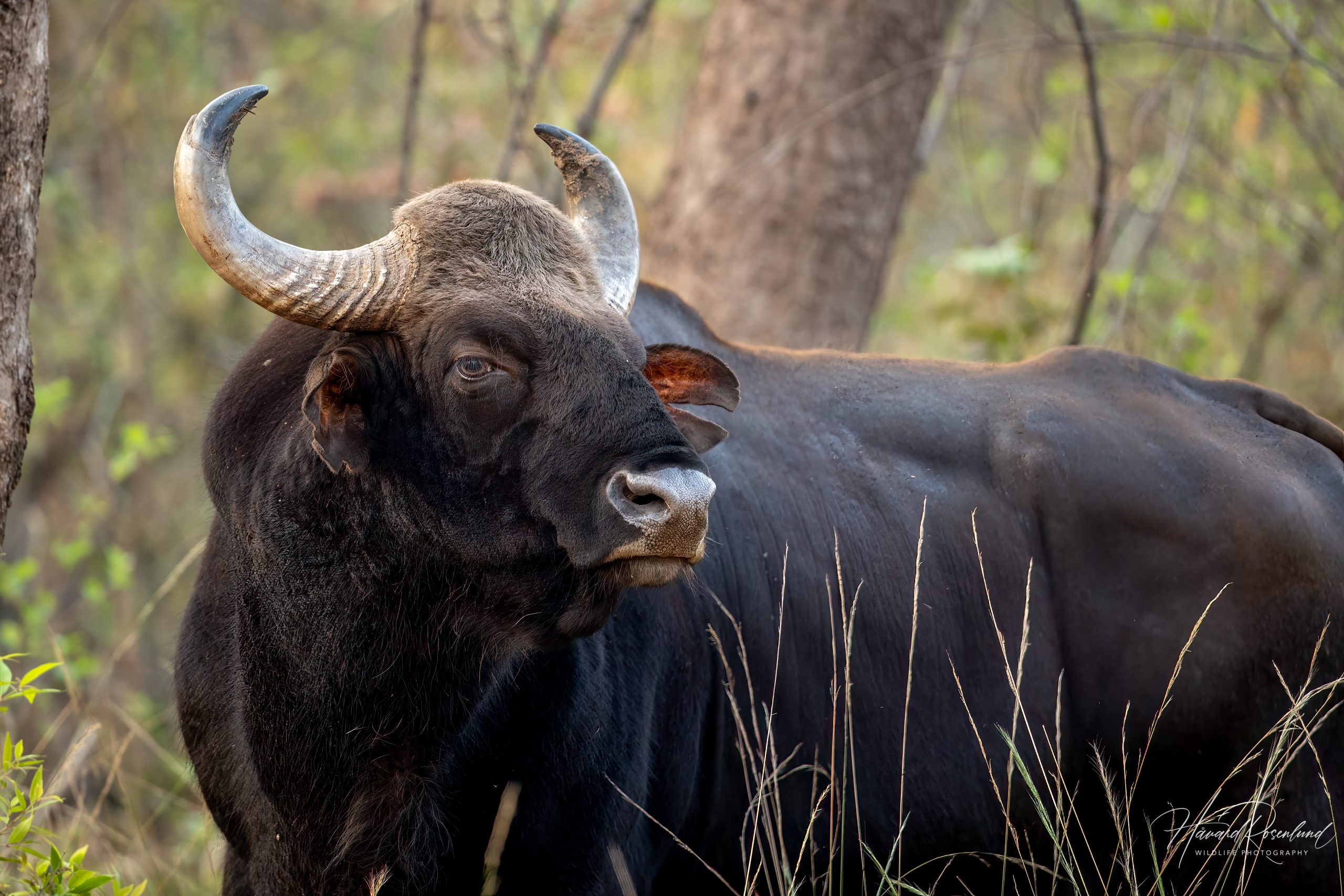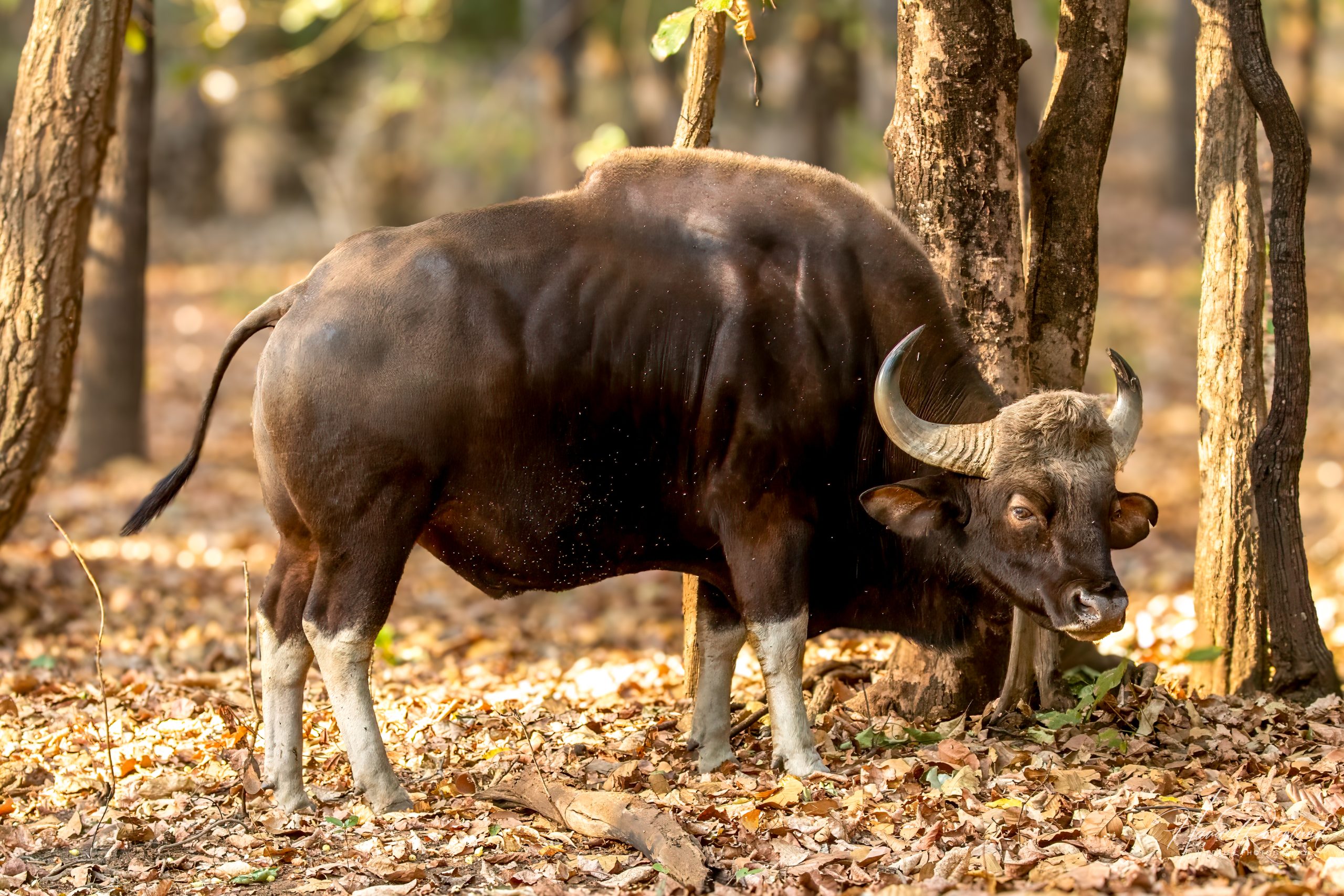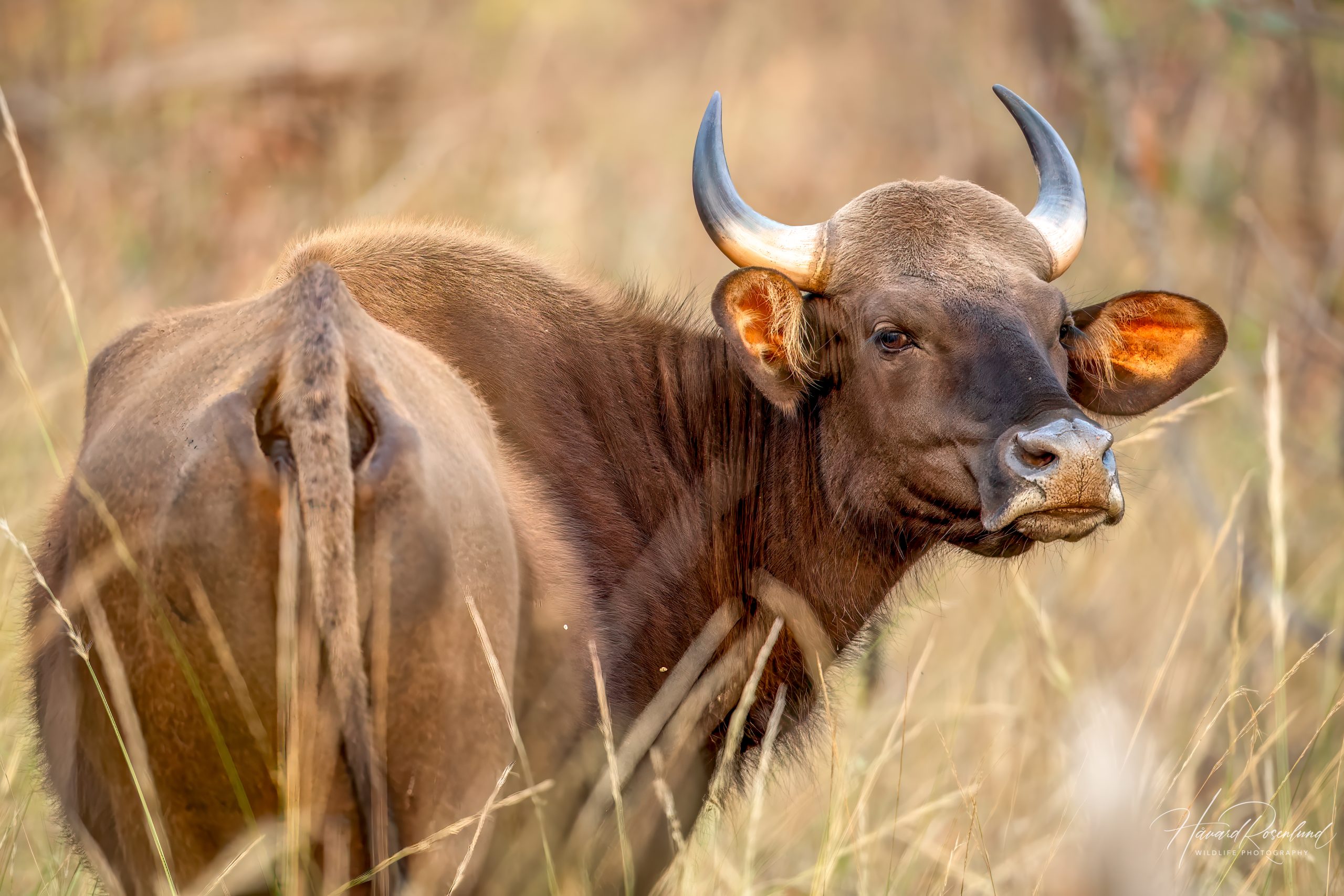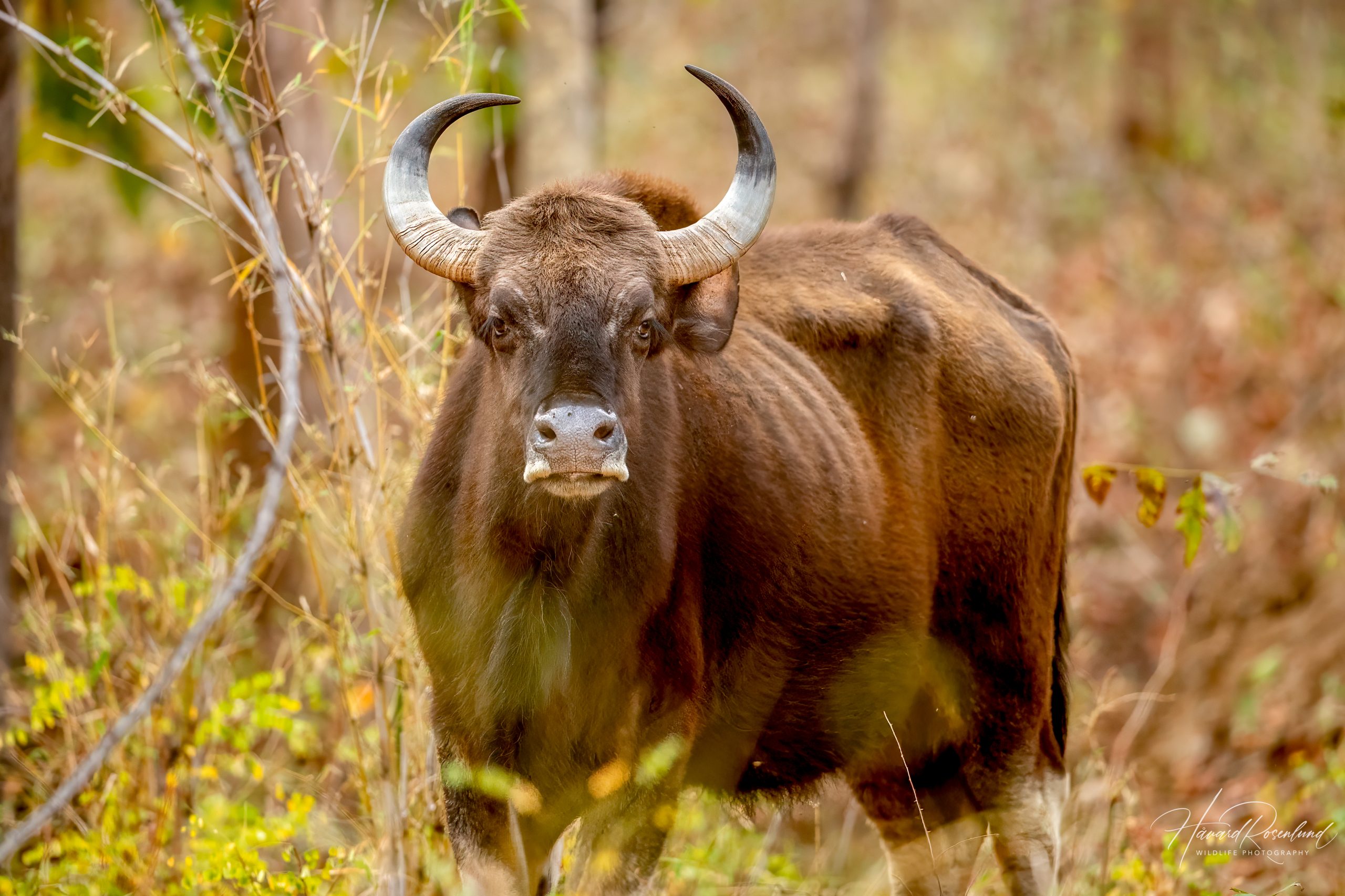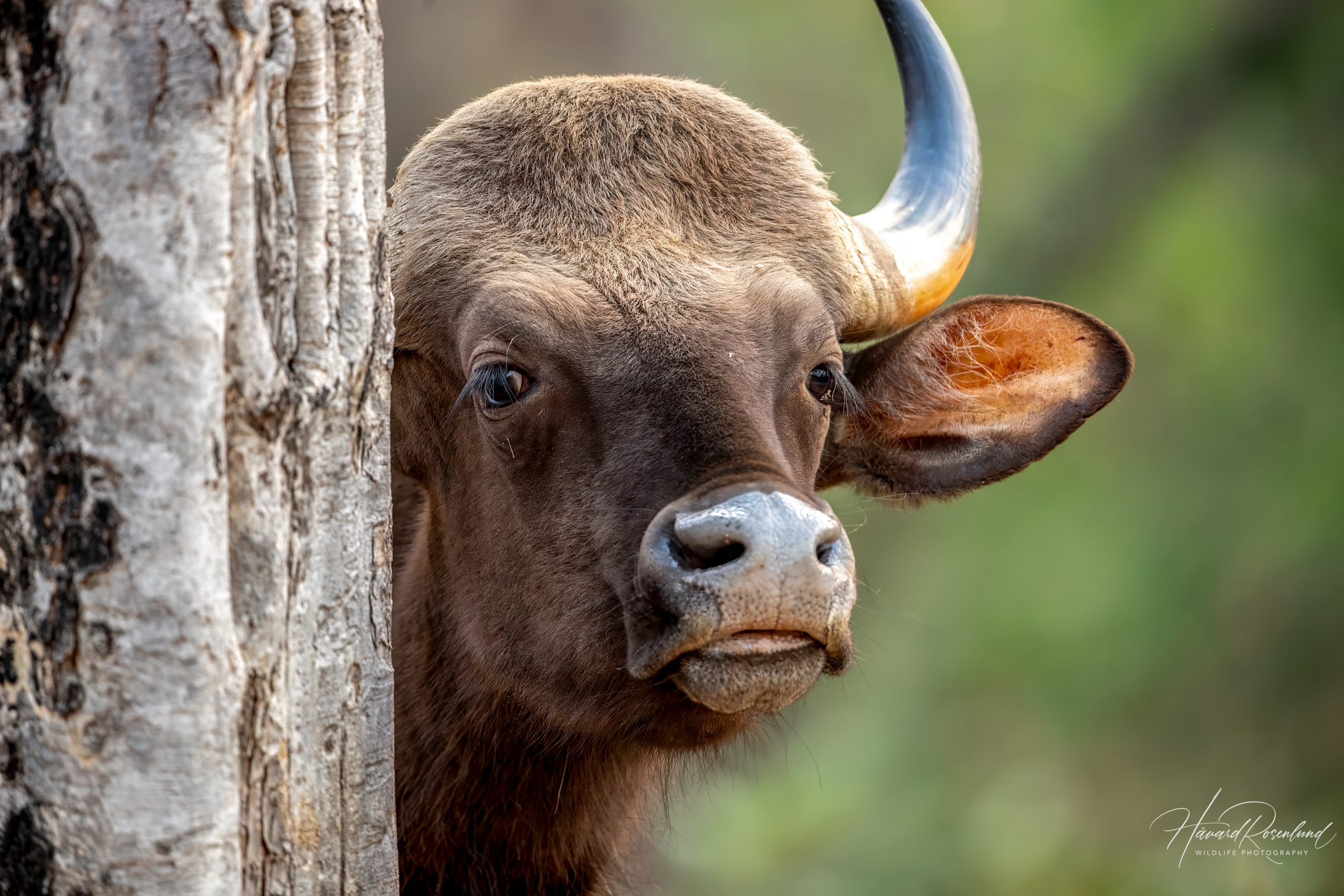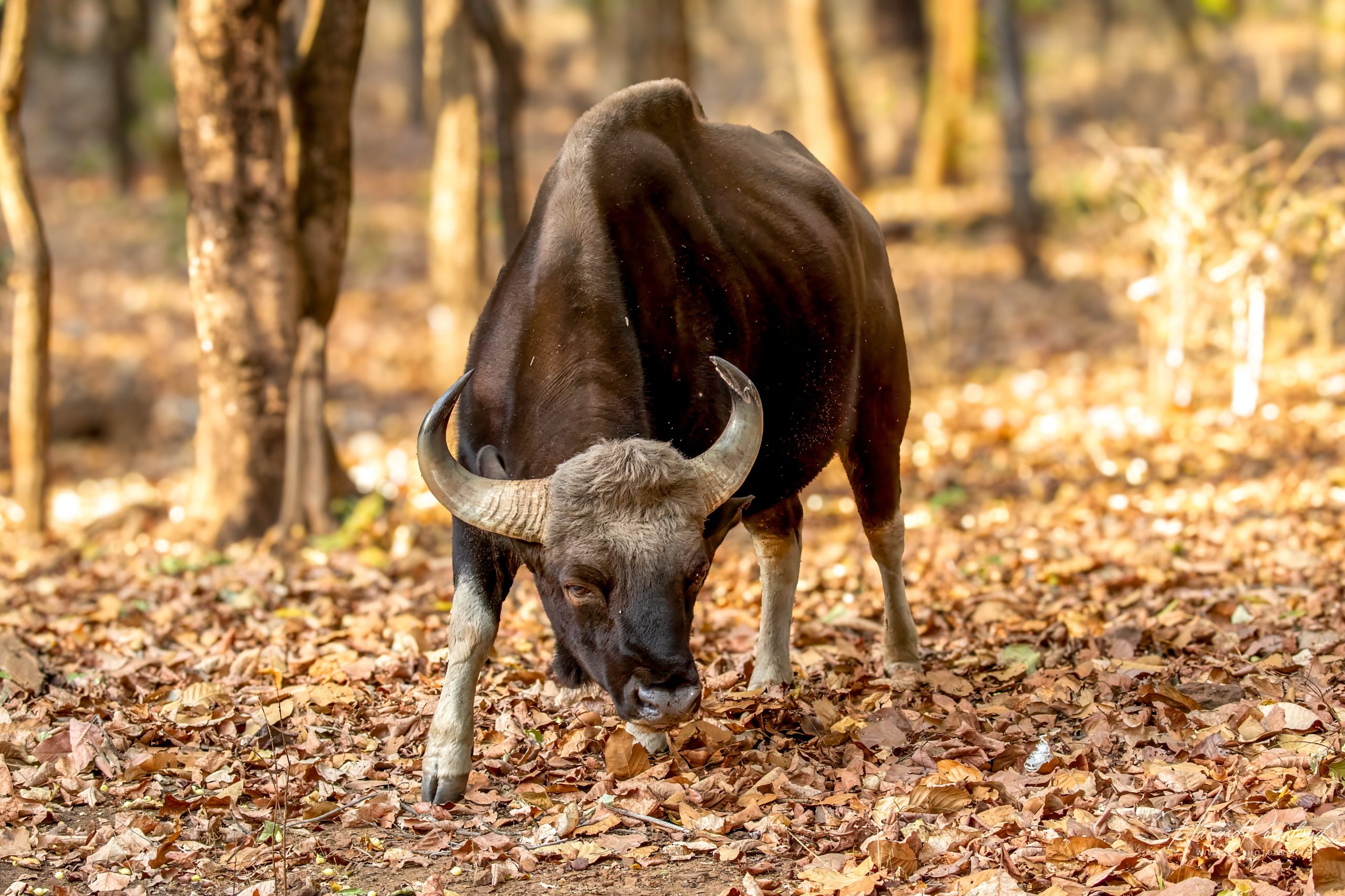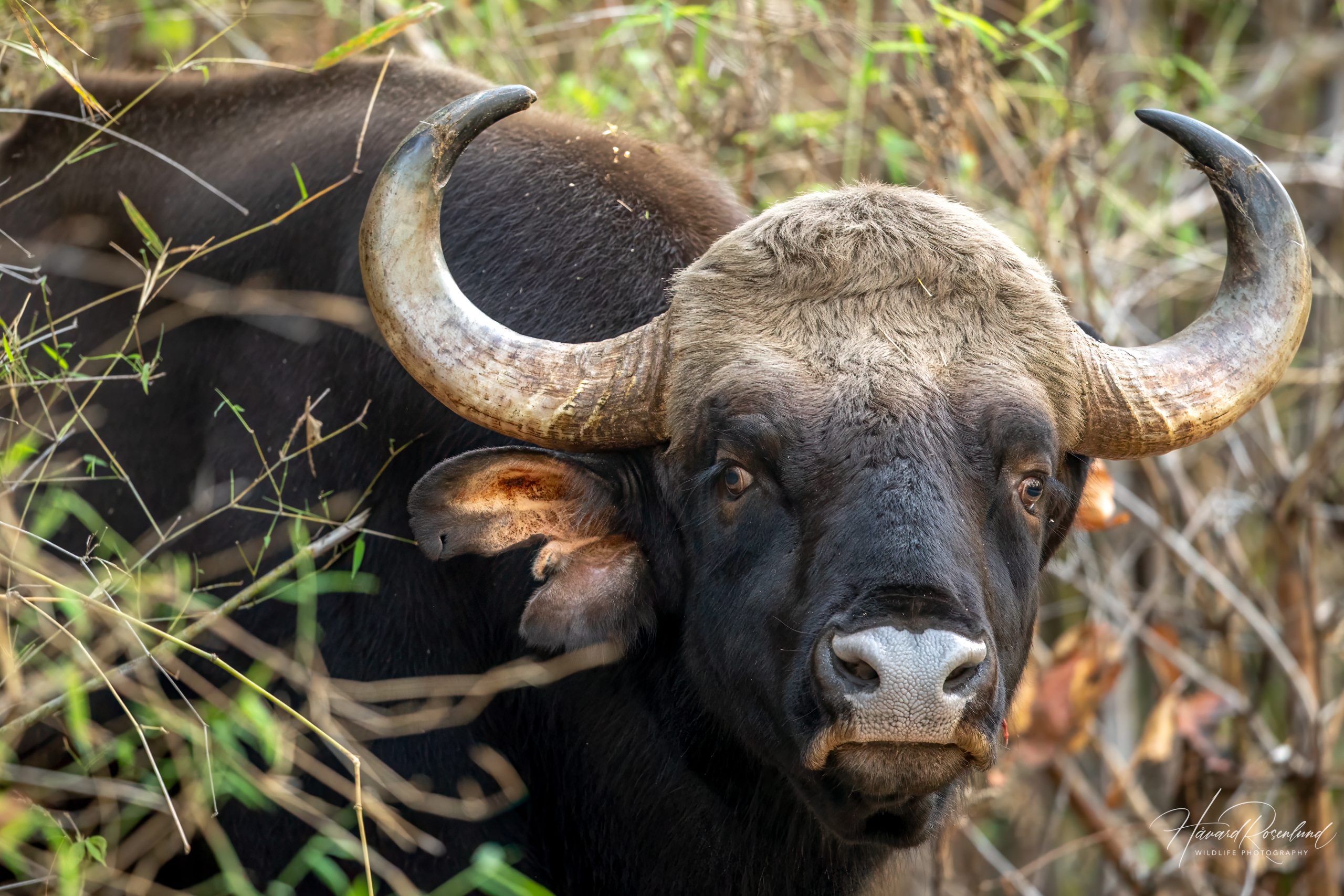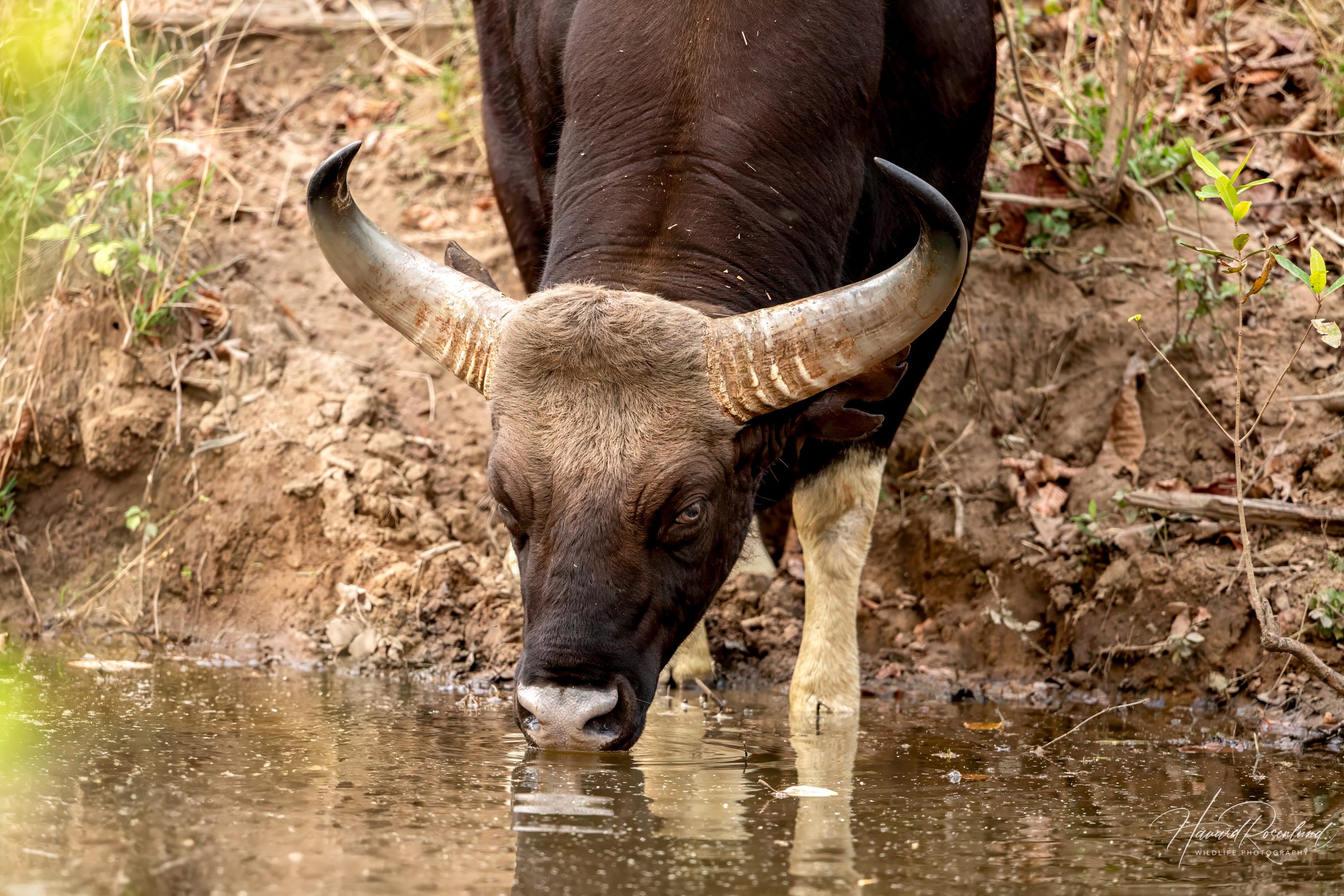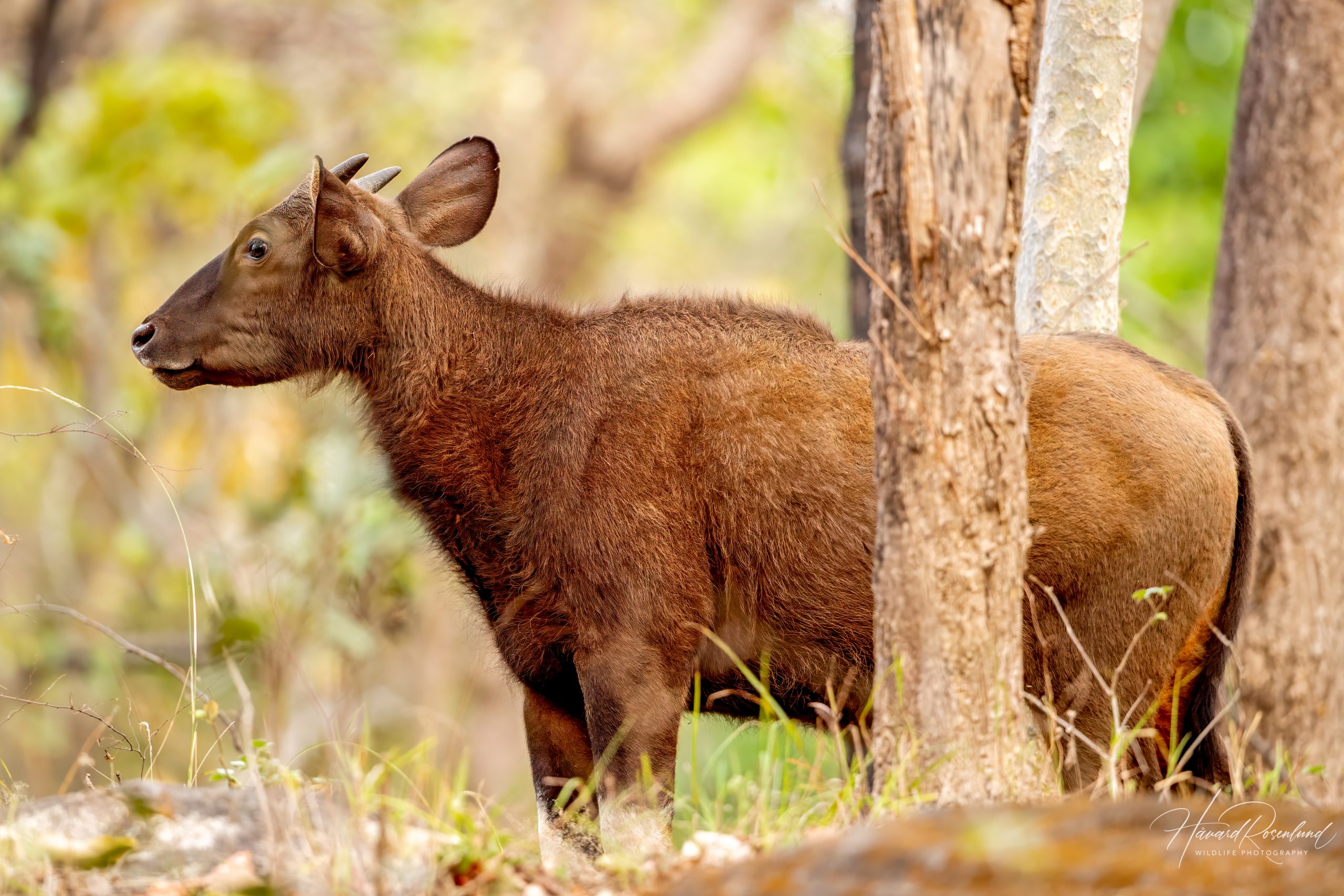Description
The gaur (Bos gaurus), also known as the Indian bison, is the largest species of bovine in the world. It is native to South and Southeast Asia, with its range extending across India, Nepal, Bhutan, Bangladesh, Myanmar, Thailand, Laos, Cambodia, Vietnam, and Malaysia. Gaurs are known for their massive size, with males standing up to 220 cm (7.2 feet) at the shoulder and weighing between 1,000 to 1,500 kg (2,200 to 3,300 pounds), while females are slightly smaller. They possess a distinctive muscular hump on their shoulders, large dewlap, and curved horns that can span up to 115 cm (45 inches) in length. Their coat color varies from dark brown to black, with a lighter hue in females and juveniles. They also have unique white stockings on their lower legs.
Diet & habitat
Gaurs are primarily found in evergreen forests, deciduous forests, and some grasslands. They are highly adaptable and can thrive in a variety of habitats as long as there is an adequate supply of water. Their diet consists mainly of grasses, leaves, shoots, fruits, and seeds. They are grazers and browsers, feeding on a variety of vegetation that they find in their habitat. Gaurs typically feed in the early morning and late afternoon, resting during the heat of the day. They use their tongue and prehensile lips to grasp and pull vegetation.
Behavior
Gaurs are generally diurnal but can exhibit nocturnal behavior in areas with significant human disturbance. They are known for their shy and elusive nature, often retreating deeper into the forest when threatened. Socially, gaurs live in small herds typically consisting of females, calves, and one or two males. Adult males often lead a solitary life or form small bachelor groups outside the breeding season. These animals communicate through vocalizations, visual signals, and scent markings. Gaurs are known to be quite aggressive when threatened and can charge at predators or intruders.
Reproduction
The breeding season for gaurs varies by region but generally occurs between December and June. During this period, males engage in displays of dominance to win over females. Once a female is in estrus, she will mate with the dominant male. The gestation period for gaurs is approximately 275 days, after which a single calf is born. Calves are weaned at about 9 months of age, but they remain with their mothers for an extended period to learn necessary survival skills. Gaurs have a life expectancy of around 20 to 30 years in the wild.
Status
The gaur is classified as vulnerable by the IUCN Red List. It is believed to be 6,000-21,000 mature individuals left in the wild. The primary threats to its survival include habitat loss due to agricultural expansion, deforestation, and human encroachment. Poaching for meat and horns also poses a significant threat. Conservation efforts to protect gaurs involve habitat preservation, anti-poaching measures, and breeding programs in captivity. Organizations and governments are working to establish protected areas and wildlife corridors to ensure the survival of this species.





